There is one thing that really bothers me about Philips Hue: I have not been able to manage with one Hue Bridge in my house for a long time. The first problems can occur with 50 or more connected lamps, the hard limit is 63 lamps. And with several rooms and the outdoor area, this limit is reached more quickly than you might think.
It is very unlikely that a new Hue Bridge will be released in the future that raises this limit. The capacity and performance of the Hue Bridge is not necessarily the problem, as Hue inventor George Yianni told me in a conversation. Rather, the ZigBee network is the bottleneck.
Interact Pro Gateway from Signify works with up to 200 lamps
But why actually? After all, with the Interact Pro Gateway, Signify offers a professional system that can establish a connection to up to 200 light points. Why isn’t this also possible with Philips Hue?
According to George Yianni, there are several reasons for this. First of all, the Interact system is installed professionally and it is ensured that the individual light sources are spaced at an appropriate distance from each other. Another reason is much more tangible in my view: with an “office solution”, performance is not necessarily important.
This is different with Philips Hue. Here, the lamps should switch simultaneously when a scene changes, and there are also “data highways” for functions such as Hue Entertainment, which must function completely without delay.
This is what the solution could look like
After all, Philips Hue has now realised that more and more users are exhausting the capacities of the bridge or the ZigBee network and need to install a second bridge. The user-friendliness of the system definitely leaves a lot to be desired here.
“We want to further improve the experience with multiple bridges in one home in the future,” promises George Yianni, without going into more detail. However, the most important foundations have probably already been laid with the introduction of the developer interface v2.
From a technical point of view, it is already no problem to send an https command from one bridge to a second bridge in order to trigger an action or transmit a status. It would be no problem to use a switch on one bridge to switch on a lamp on the other bridge. In principle, this could even be implemented by third-party providers if Philips Hue would open up the new API to developers.
Whether Philips Hue will continue to pursue this approach and when we can expect a possible solution is still completely open. In any case, a good dose of patience is still required.
Note: This article contains affiliate links. We receive a commission for purchases via these links, which we use to finance this blog. The purchase price remains unchanged for you.


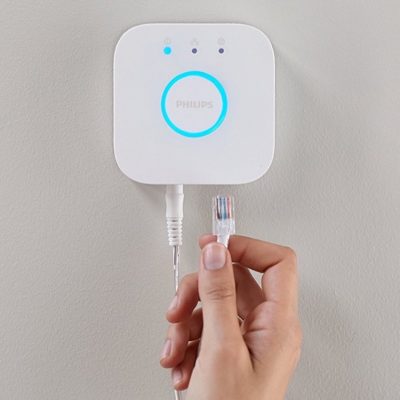

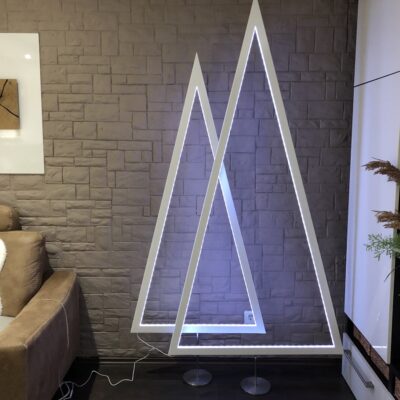
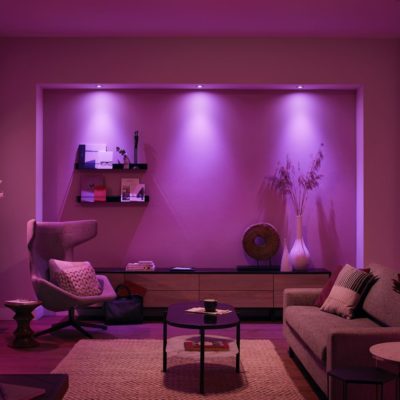


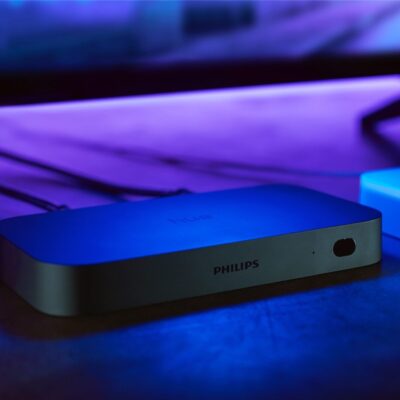

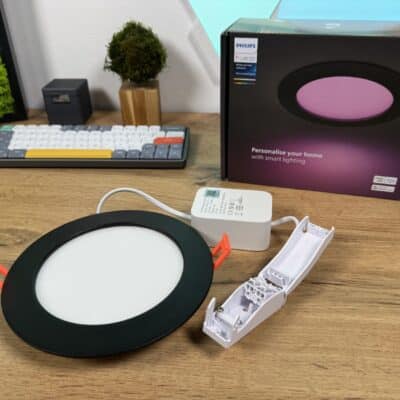

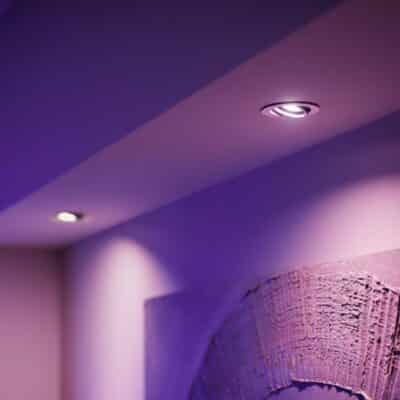


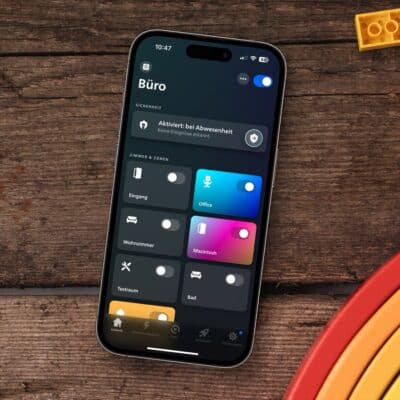
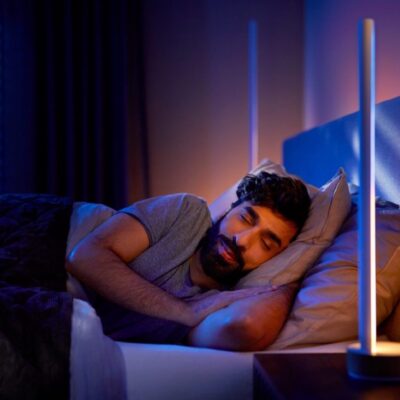
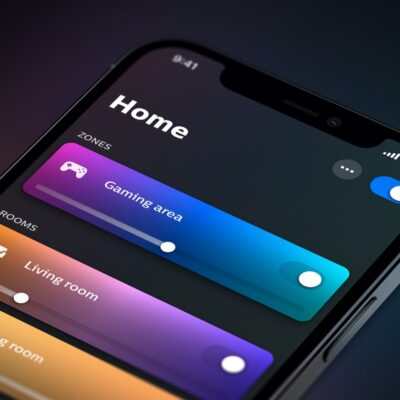



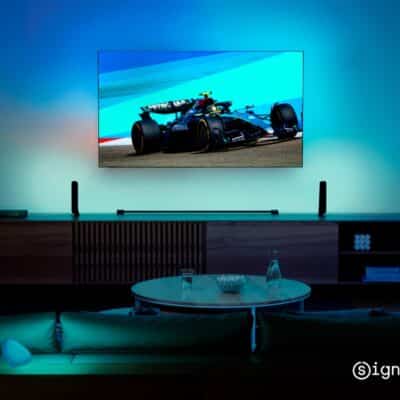
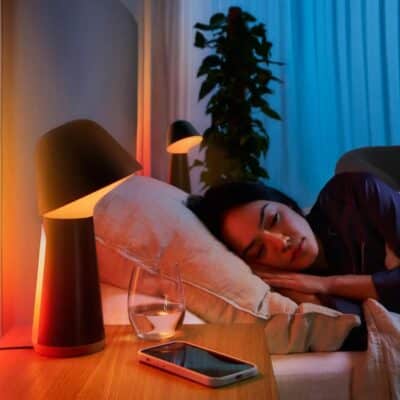
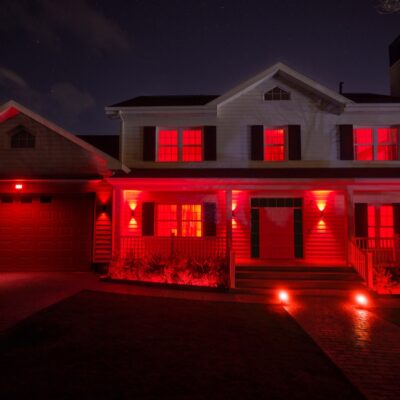
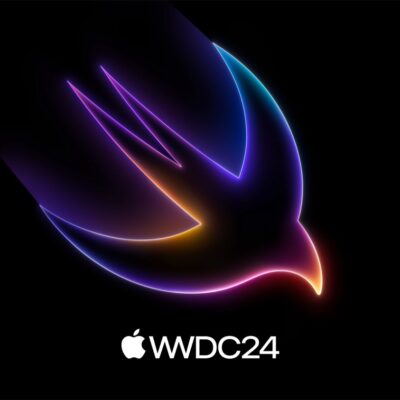
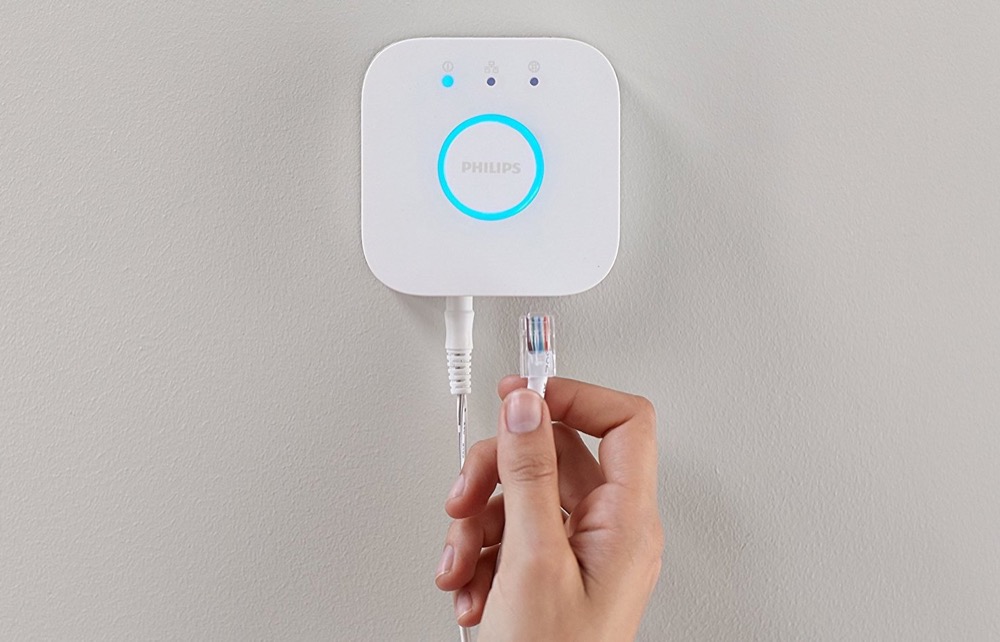
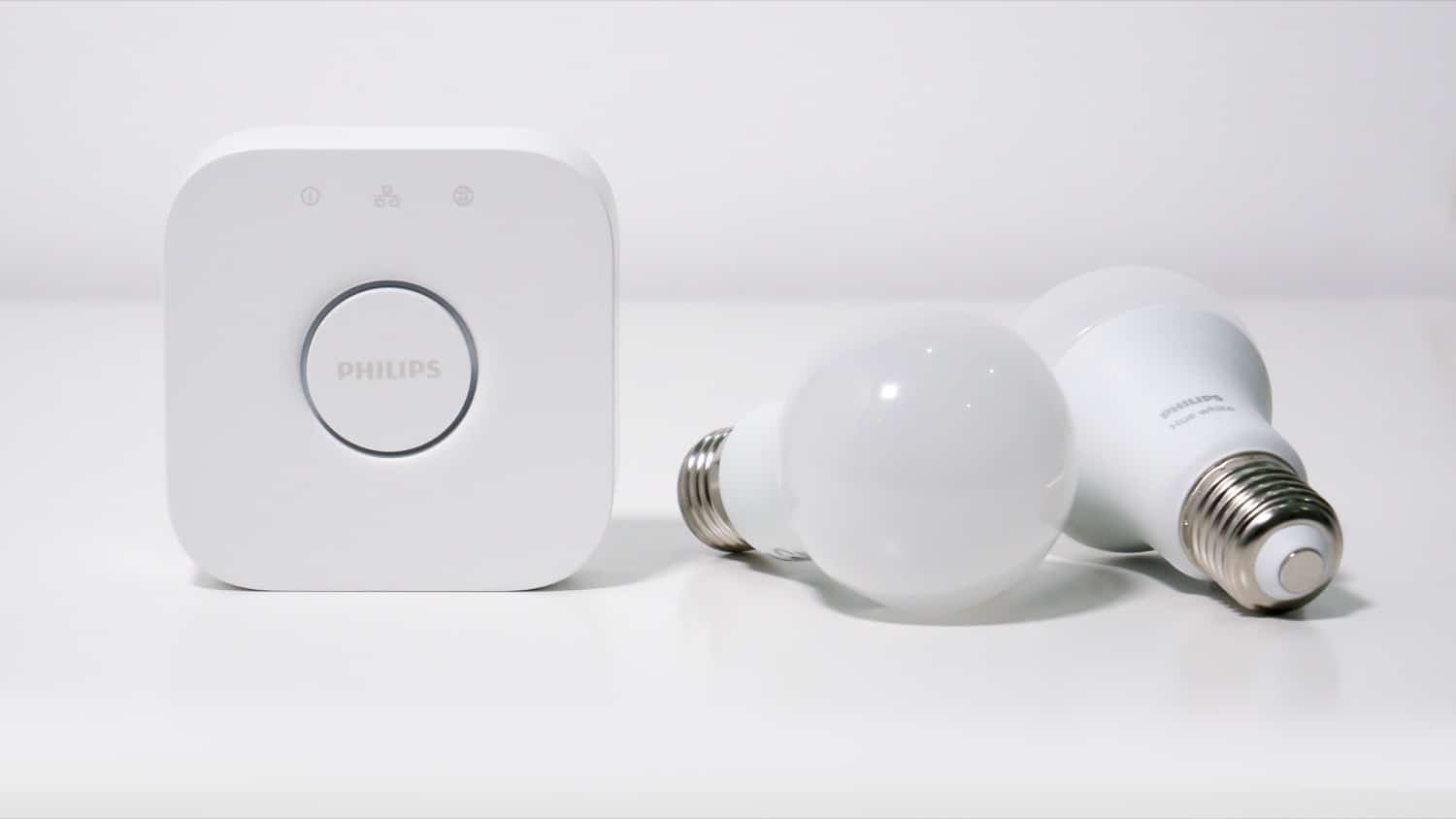
The limits of bridge have been, are and continue to be a serious problem regardless of what George says. I understand that they have statistics and that they will see that a majority does not need more than a bridge and they are not even close to the limit, but you must realize that those of us who promote the brand and make it grow among our relatives are the power users, those which have the entire house with Philips Hue light bulbs and many accessories.
I know that there are multiple solutions such as using home assistant, homekit or alexa with matter to have several bridges and use them in a unified way (haven’t tried google home), but the experience of the official application is lost, which for now remains far superior to the rest of the integrative solutions. To turn on and off and automate integrative solutions are worth, but for manual operation, creating scenes, using the special functions of Festivia, ease of sensor automations… the Philips Hue application is far better.
Several solutions that I have in mind (it is true that I’m no expert of physical protocols, but I understand that I am not misguided):
– Being able to manage several bridges from the same account and unifying them (it seems that this is the option they are studying)
– Create a new Hub with a greater limit of bulbs. Yes, the Zigbee standard has its limits, but a Pro hardware could allow more than one channel and physically separate the network into different Zigbee channels which would mean 50 bulbs (or 63) per channel. In the end it is the same as several hubs (each one would require a different channel to work better), but unified. The biggest problem is getting a good location to reach everything and figuring out how to distribute the bulbs between the two networks automatically (complex but it would be ideal) or manually and have people take care of doing it. Since it is aimed at Power users, I understand that it is a feasible solution. With the solution of several bridges, it would be easier to locate each bridge near its network of light bulbs and accessories, but in the end it is similar to a more advanced bridge in which we manually distribute the light bulbs according to their proximity to each bridge.
We have been asking this for too long and I think for the price we pay for their solution, we must be heard.
This is exactly what I’ve been screaming for too.
Internally the hub can manage multiple zigbee channels without user level input.
It should be easy to add a “network optimisation” feature that pings all the lights to determine the distance they are from each other & decides which bulls to add to each channel to give an even and reliable spacing.
I would forego tomorrow the entertainment feature to have an increased limit.
However I don’t really buy this as the complete reason.
On my hub I’ve not reached the light limit but the accessories & it makes it impossible to save automations etc without removing an accessory.
I think they could improve much by better memory management or just having increased ram in the hub.
It simply isn’t a limit of the ZigBee Protocol at all, as long as repeaters are included in the mesh ZigBee is pretty much limitless. Yes, you may see a slight ‘popcorn effect’ with large numbers of bulbs, but ZigBee Group Messaging can fix this in most cases. Just look at systems like Hubitat or Smartthings, as I sit here I have circa 100 different ZigBee devices linked to my Hubitat hub, with zero performance slowdown. Signify could learn a lesson or two from platforms like these, plus Hubitat also has the ability to mesh multiple hubs. Again, something PH could also look to implement.
Home automation is still in its infancy. Even the professional installations. It takes time for everyone to get thru the dick measuring thing, show their own devices and systems, try their own protocols, big ideas, try to convince everyone their product and their protocols are the biggest and baddest and then everyone will conform to a few protocols and you will be able to intermingle without running 10 different mundane and cumbersome apps that all have their own hub and subscription. I know, I know, there’s Home Kit and all the other apps that just don’t do enough. I mean you can do this with this app but not that and with this new app you can do that but not this. Someone needs to get serious and develop an app/system that doesn’t care what you have or want to do or what you want to tie together or how you want to make them work. You can just do it. Not, you need to have this device, this version, this hub, this protocol but not that and next year will need…..blah blah blah blah. It will happen but not anytime soon with the way they’re going. Went thru this with commercial and industrial building automation for the last 30 something years. It really can be much easier, we have the brains and the technology. It’s all about the copyrights, patents and $$$ right now. Same shit, different era.
Yet HomeKit can manage and control all 4 of my hubs instantly with switches and lights across different hubs. I can press a button on one hub and turn off lights on any hub ( and close blinds etc too which is a bonus )
Why can’t they functionally do the same thing. Say 5 hubs within a single unit and a controller.
I am fine as the HomeKit solution is fantastic. But it just means I barely use the app.
Changed to home assistant. Bridges out Zigbee dongle in. Works much better and I don’t have to share any data anymore
I don’t mind setting up multiple hubs. I ended up with like seven of them by just buying starters kits on sale as a cheaper way to get the bulbs. I just want to be able to have a unified experience in the hue app, controlling lights across multiple hubs on a single account. Realistically, the solution is a purely software one that can be implemented with an update.
I guess Hue needs to figure out whether they want to actually be a whole home system, or just a toy that people play with in a few rooms and nothing more.
I don’t agree and think this is a purely software (or hardware, depending on what they’re using) limitation and not a protocol one, as I currently have a 110 devices forming a single ZigBee network at home (with Home Assistant and zigbee2mqtt), with mostly Philips Hue lights, Ikea and TuYa stuff. Except ocasional problems with cheap TuYa lights (which is somewhat expected for their price), everything works great and Hue with Bluetooth lights also seem to be performing great as routers. No need to invent multiple channels/bridges solution, when last gen Philips’ own bulbs already work great in large network if you forgo the Hue bridge. And on a side note, when you have that many smart devices, it anyway might be worth considering a solution which doesn’t lock you into Philips ecosystem and impose artificial limitations.
This is the difference between older Zigbee and newer Zigbee (the last couple years) procols. There has always been a limitation on older Zigbee where most companies cap it at an even 50 devices. Yes it can do more 10-20 more devices, but it makes sense to play it safe at 50. The new Zigbee protocol and bands can do 100+ devices, however it’s not backwards compatible so any older lights would not work on it. Systems like Ketra 1.0, which uses a modified version of Zigbee, capped devices at 50, but allowed though the software to combine hubs. Hue does this as well, problem is they treat each hub as a separate house so there is no cross communication between devices on different hubs. It’s a pretty simple fix honestly for Phillips to allow multiple hubs. But where the rub becomes is then you have to have your customers prepared enough to know how to map out their houses because if you add a new bulb in an area of the mesh where you’ve hit your limit, and you’re outside the range of the other hub, it becomes a challenge and moving devices. That becomes a fast frustration point. I think this is what they’re trying to avoid.
Ok, but…aren’t they moving over to Matter now instead of ZigBee? So shouldn’t that matter anymore now? Or am I too stupid to understand how it all works?
Too stupid, but you have to be an engineer who follows this to understand it so don’t feel bad. Matter is a communication standard, but the devices still need a means of communication. This is the same way English is a language, but you still need to know how to talk or write to converse with it.
Right now, Hue lights mostly communicate by piggy-backing signals on the power lines, which has limited bandwidth for each channel. Some of them also have Bluetooth radios, but that’s too short range to be reliable. You can also use wifi, which has longer range but consumes more power. The solution the Matter people want companies to use is Threads, which involves crappy low power radios like Bluetooth but in a mesh configuration that supposedly gets around the range limitations.
Totally clear, right?
No they are still using ZigBee.
They have updated the hub to be a matter bridge so the hub supports matter externally via ethernet.
But the hub talks to the lights and switches etc using ZigBee still.
I assume they won’t move everything to matter coz then we’re not all locked in and they can’t create a point of difference
Clearly if you can have two or three bridges in your home that all work fine, you can have one box that contains 2 or 3 bridges that seamlessly switches between them. So Philips could easily fix this problem if they want to.
Myself, I have just over 100 lights. I’d get more, but I don’t want the hassle of finding place for a third hub, trying to figure out which hub a light was on when it dies and needs replacement, etc. Nor would I recommend Hue to anyone who isn’t an engineer. These hubs are really not that user friendly.
I have a 2-storey property of about 90 sqm fully fitted with Philips Hue. I have 2 bridges (one managing each floor) and I am unable to experience all the goodness of the system because I am unable to add scenes, programmes or do anything fancy with it due to having reached the storage capacity of both bridges. It is like having a Ferrari with a family of 5 and having to go alone all the time in the car as the wife prefers (who could blame her?) to go with the children in the SUV. I am sure someone will develop a far superior system than Philips Hue in the near future, and I will be the first to jump to it.